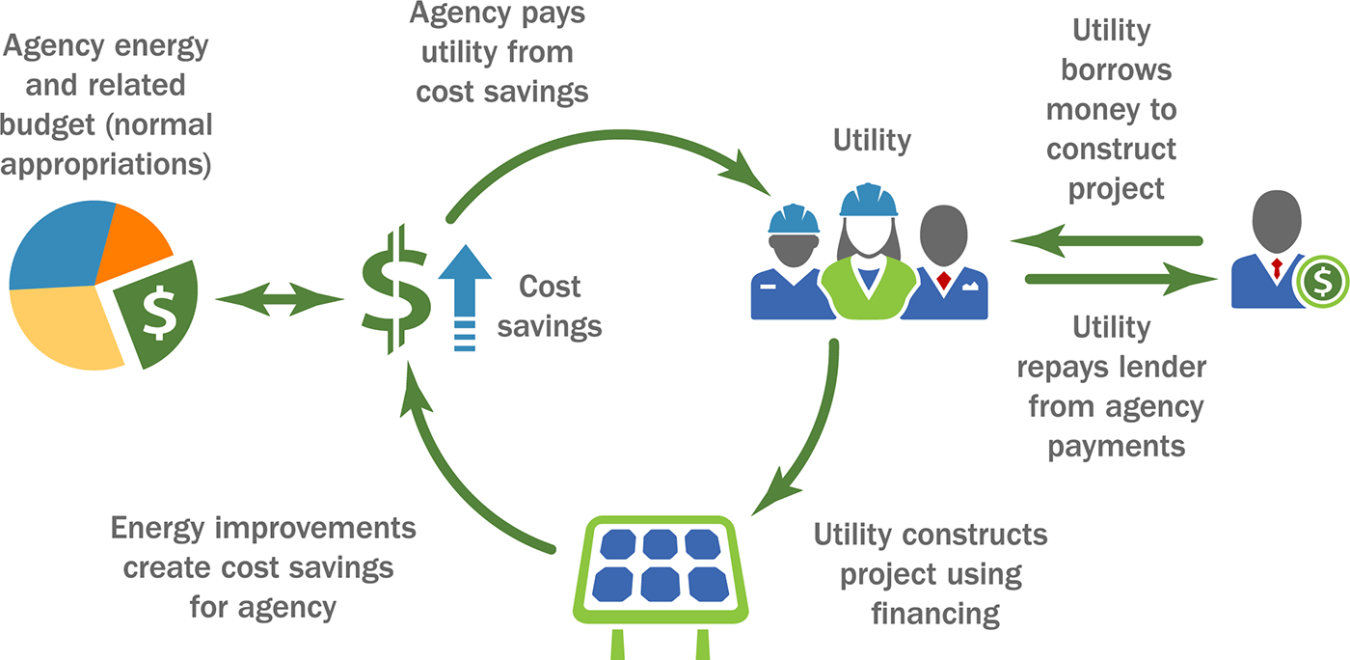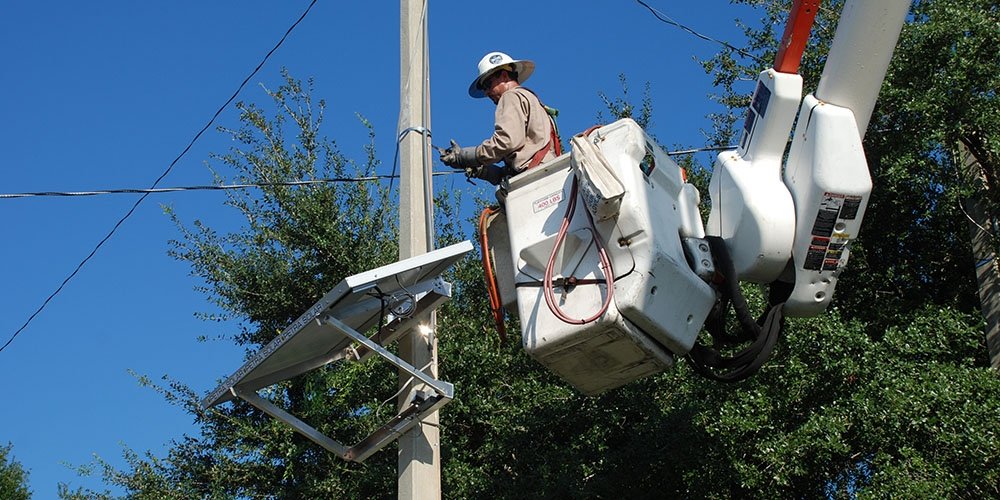
Cycle of Cost Savings and Payments for UESCs
Ready to get started?
Start a UESC project by contacting FEMP's utility team, considering training and technical assistance options, and reviewing the process for procuring a UESC.
A utility energy service contract (UESC) is a limited-source acquisition between a federal agency and serving utility for energy management services, including energy and water efficiency improvements and energy demand reduction. Under the Energy Policy Act of 1992 (codified as 42 U.S.C. § 8256), federal agencies are authorized and encouraged to participate in utility incentive programs that promote such improvements and that are generally available to the utility’s customers.
UESCs provide a streamlined approach for federal agencies to contract for the broad spectrum of energy management services offered by local utilities. The utility partner assesses the opportunities, designs and implements the desired energy conservation measures—which can range from lighting retrofits to renewable energy systems and combined heat and power plants—and may provide financing for the project. The agency may use any combination of appropriations and financing to pay for the project, providing useful flexibility. Any size project can use a UESC.
Since the beginning of the Federal Energy Management Program’s (FEMP) Utility Program, federal agencies have awarded billions of dollars in total UESC project investment value to improve their facilities.
Agency
- Use for large and small projects
- Leverage incentives, including financing
- Optimize use of energy and water to meet goals
- Streamline contracting with established source
- Take advantage of utility expertise
- Appropriate for a wide range of projects and facilities, including leased space
Utility
- Increase incentive program impact and participation
- Reduce need for new generation
- Improve system reliability through improved customer load profiles
- Assist federal customer goals
- Meet public utility commission requirements
- Provide exemplary customer service
Have questions?
Read the answers to frequently asked questions about UESCs or contact the FEMP utility team. Utilities: Get help with UESC basics.
Existing Contracts
It is important to know your existing contracts. Many agency sites procure electricity services under a contract with the local utility, and most of these contracts have provisions that can also cover energy efficiency projects. Agencies not covered by such agreements may enter into contracts with the utility for the sole purpose of implementing energy projects.
Agency staff will want to first determine whether their facility is already covered by a GSA areawide contract or pre-contract agreement such as a basic ordering agreement or master agreement. Using an existing contract that is familiar to the agency and the utility is typically the most expeditious means of getting projects done.
Areawide contracts (AWCs) are master blanket contracts for public utility services. The contract outlines general terms and conditions and authorizes any agency in the utility's service territory to place task orders for services offered under the contract. The order describes the details and technical specifications for the energy efficiency project or other services to be delivered.
The U.S. General Services Administration (GSA) established utility AWCs to procure utility services for federal facilities around the country. The GSA website contains a list of AWCs, an overview of energy and water conservation activities, and guidance materials for areawide users.
Learn more about the use of GSA Areawide Public Utility Contracts.
Depending on your agency's policies, basic ordering agreements (BOAs) may be an option. BOAs are pre-contract agreements that establish general terms and conditions for future contracts. A task order placed under a BOA constitutes the contract and details services to be delivered. Any federal agency can establish a BOA with its utility.
Learn more about BOAs in Federal Acquisition Regulation Part 16 on the Acquisition.gov website.
Need an example?
Read the UESC Boosts Chemical Weapons Destruction Mission at Army Pueblo Chemical Depot case study.
UESC Guide
Agencies interested in developing UESC projects are encouraged to use FEMP’s Utility Energy Service Contract Guide, a comprehensive, step-by-step resource complete with samples and templates of UESC documents. See the UESC Guide and other resources.
Report Your Project Data
Maintaining and collecting accurate data from ongoing and awarded UESC projects is vital to tracking the government's energy efficiency progress and understanding UESC trends. Learn how to easily and confidentially share your awarded project data with FEMP on the UESC project data collection page.
Get the Best Value
These FEMP resources explain lessons learned and recommended best practices for getting the best value from your federal UESC.
Resilience and Cybersecurity
Partnering with serving utilities to implement UESCs can help federal agencies achieve their energy and water resilience and security goals by increasing reliability, reducing system loads, incorporating microgrids and energy storage, and more. To learn, see:

On-Demand UESC Training

